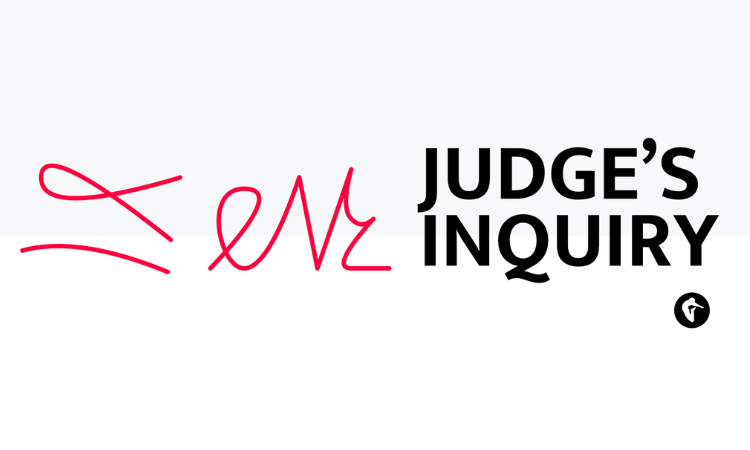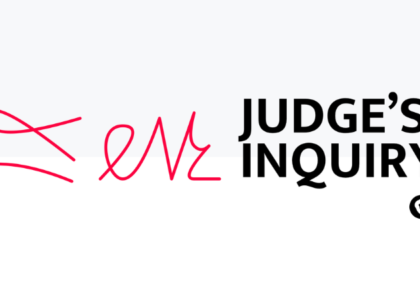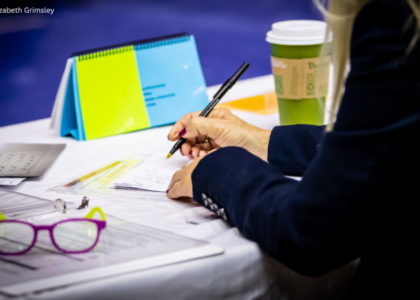The 2024 NCAA gymnastics season is well underway, and we have seen our share of fantastic performances from some of the nation’s top gymnasts. However, the performance of the judges, charged with evaluating these routines, has often been disappointing. It seems that we have entered a seemingly endless cycle, where every season we hope for consistency and accuracy, followed by outrage at the overscoring of one team or conference, and then disappointment from the lack of any real accountability for the judges making these errors.
As a former NCAA judge myself, I have judged alongside both fantastic officials and those who flashed scores that made me question if we had even watched the same routine. Watching some of the routines this season, where gymnasts with very different levels of quality are receiving the same score and where some are receiving impossible scores that exceed their start values, has left me with a similar feeling,
Here are some of my general observations about NCAA judging from the 2024 season.
Applying the New Landing Hold Deduction
This year, NCAA gymnastics added a new deduction to try and better evaluate whether or not athletes are in control of their landings. This requires all gymnasts to hold their dismount landing for a full second in a “finish position,” which is upright with their hands over their head and feet together. Any landing deductions (steps, arm circles, posture, or balance errors) that happen before this hold is completed are applicable. If a gymnast doesn’t hold the “finish position” (which is different from the landing position) for a full second, they receive a flat half tenth deduction.
Although there is no way to know definitively, there have definitely been some instances where athletes are scoring very high and not holding their landing position. I went back and looked through the landings at the LSU – Arkansas meet, where the Tigers earned a 198.475, the highest team score of any program this season. Three of the five counting vault scores and four of the five counting bars scores should have received a hold deduction. Based on landing deductions only, none of the three vaults had the hold deduction applied, and at least two of the bar landings did not have the deduction applied. This is one example, but the point is that this deduction is not being consistently applied by the judges. I’m not sure if they are forgetting or if they “feel bad” taking it when the gymnast is clearly in control of their landing and doesn’t hold it, but it shouldn’t matter.
Poor Consistency Across the Country
The only thing consistent about NCAA gymnastics judging is that it is not consistent among different officials and competitions. The All Things Gymnastics Podcast clearly illustrates this problem on X/Twitter by pairing two routines with the same score with glaringly obvious differences in quality.
For example, take a look at Jade Carey’s (Oregon State) and Sierra Brooks’s (Michigan) matching 9.925s. Their floor routines show a vast difference in quality, where Carey is clearly overscored with her pair of out-of-control landings, and Brooks has few (if any) visible deductions. In another example, both Haleigh Bryant (LSU) and Mackenzie Wilson (Kentucky) scored 9.95s on the same vault. Wilson’s was clearly better executed since Bryant landed with her chest low and hopped forward on her landing.
The consistency problem would be easier to address if it were one conference, one team, or a couple of gymnasts. It’s not. It happens every weekend, across divisions. It’s an epidemic of poor judging, which calls the validity of this sport into question. The highly ranked teams are in the spotlight for this problem, but that doesn’t mean it isn’t also happening at Division II or III meets. As I saw when I looked at the Tennessee Classic, the overscoring was absolutely unhinged, created by a perfect storm of poor judging that no one predicted.
Assuming 10.0 Start Values
As frustrated as I am by the lack of judging consistency, being unable to correctly calculate a start value is even more frustrating. Evaluating execution is inherently subjective, so there will always be some variability of scores based on opinion. However, impossible start values should never occur. An impossible start value is when a gymnast receives a start value higher than the maximum score based on the routine’s composition. This is an objective evaluation and an automatic judging conference if one judge flashes a start value higher than physically possible. For example, at this season’s meet of Florida at Georgia, Lily Smith scored a 9.875 (9.80/9.95 split) on beam for a routine that started from a maximum score of 9.7. Both judges gave an impossible start value; the meet referee did not intervene, so the score stood.
In judging, there is an emphasis on fast scoring, and judges often assume (especially for high-ranked teams) that unless there is a fall the composition is correct for a 10.0 start value. However, this may not be true as an athlete may leave out a skill (in Smith’s case) or may have made a mistake in the composition that no one has caught yet this season. Judges should be calculating the start value (counting skills, special requirements, and bonus) for every single routine. If a judge accidentally awards a lower start value than is correct, I guarantee the coach will fill out an inquiry form and that error will be corrected. But if it’s too high? There is no way to correct an incorrectly high start value once the score is entered by the head judge, and this is a problem.
I’d also love to see more judges break connections that are clearly not connected on floor or beam. If there is any sort of balance error, stopped or reversed movement, or foot adjustment, these connections should be broken. This would be reflected in the start value since it usually has ramifications for special requirements or bonus calculations. I’ve yet to see an NCAA judge break a slow connection on beam, even with clear balance errors or foot movements. I’m sure it happens, but the dominant judging culture seems to be “give the connection and take a deduction,” which is a disservice to the athletes that can actually do these difficult connections, and it disincentivizes athletes to take the risk by doing a faster connection that could result in a balance error following the second skill.
What’s Next?
In my opinion, the first step in creating change is proving that there is a problem and holding those in power accountable. With judging assignments, coach evaluations, and routine summaries not publicly available, it’s hard to quantify the problem and track trends. Ideally, tracking individual judging metrics would be a strong first step in measuring this problem. Data regarding the location, type, and number of judging assignments, as well as individual scores and how they vary compared to team event averages and the average score could be tracked. All this information can be found on the official score sheets, signed by the judges and coaches, and is publicly available and archived on Road to Nationals. Anyone can download the score sheets and see the judging panels and each judge’s scores. Although labor intensive, having data to support the trends that we already see in judging could help to make a case for change.
With the level of competition increasing across the sport, athletes are putting up more perfect and near-perfect routines each week. Judging should be more strict to differentiate these routines, with larger deductions taken for larger errors, rather than the college standard of 0.05 for pretty much every “up to” deduction. Although I have no confidence in anything changing between now and the end of the season, it makes me wonder how we can move from complaining to improvement. Policy changes generally occur after something so egregious happens that those in power are compelled by the public to create laws and regulations ensuring it never happens again. What kind of tragedy will it take to catalyze the reform in NCAA officiating that gymnastics so desperately needs?
READ THIS NEXT: Judge’s Inquiry: 9 Ways to Improve NCAA Judging
Article by Rhiannon Franck
Rhiannon Franck is a former national-rated NAWGJ women’s gymnastics judge with over 15 years of USAG judging experience and nine seasons judging NCAA gymnastics. Outside of gymnastics, Franck works at a university as a nursing professor and loves to travel. You can follow her on Instagram and Twitter.




11 comments